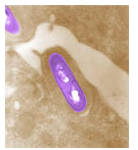Listeria – Safeguarding Your Food Operation
The following webinar is presented by Dr. Bob Strong, instructor for SAI Global, and a driving force in food safety operations in the area of GMP – Good Manufacturing Practices.
SAI Global Webinar on guarding you food operations from listeria.
Listeria Monocytogens
This is a genus of bacteria that, until 1992, contained 10 known species, each containing two subspecies. As of 2014, another five species were identified.
This bacteria is incredibly difficult to track: When people eat food that’s tainted by Listeria, the incubation period varies from 3 to 70 days.
Listeria is the name of a bacteria found in soil and water and some animals, including poultry and cattle. It can be present in raw milk and foods made from raw milk. It can also live in food processing plants and contaminate a variety of processed meats.
Listeria is unique among many other germs because it can grow even in the cold temperature of the refrigerator. It can be killed by cooking and pasteurization.
Listeria Sources
Ready-to-eat deli meats and hot dogs
Refrigerated pâtés or meat spreads
Unpasteurized (raw) milk and dairy products
Soft cheese made with unpasteurized milk, such as queso fresco, Feta, Brie, Camembert
Refrigerated smoked seafood
Raw sprouts
Symptoms of Infection
Fever, stiff neck, confusion, weakness, vomiting, sometimes preceded by diarrhea.
If you are very ill with fever or stiff neck, consult your doctor immediately. Antibiotics given promptly can cure the infection and, in pregnant women, can prevent infection of the fetus.
Preventing Listeria Infection
Do not drink raw (unpasteurized) milk, and do not eat foods that have unpasteurized milk in them.
Wash hands, knives, countertops, and cutting boards after handling and preparing uncooked foods.
Rinse raw produce thoroughly under running tap water before eating.
Keep uncooked meats, poultry, and seafood separate from vegetables, fruits, cooked foods, and ready-to-eat foods.
Thoroughly cook raw food from animal sources, such as meat, poultry, or seafood to a safe internal temperature.
Consume perishable and ready-to-eat foods as soon as possible.
Persons in higher risk groups should heat hot dogs, cold cuts, and deli meats before eating them.
CDC Definition and consideration
= $u_time + 86400) {
echo “Page last modified on “;
the_modified_time(‘F jS, Y’);
echo ” at “;
the_modified_time();
echo “, “; } ?>
